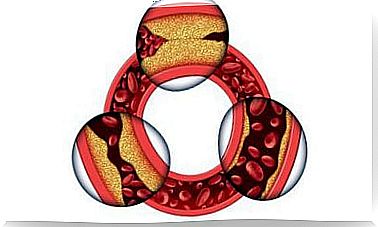E-cigarettes: Safety Concerns

E-cigarettes are electronic cigarettes developed in recent years that have helped society to find alternative methods to reduce the harm caused by tobacco smoking. Recent studies have helped us delve deeper into the health effects of e-cigarettes, but they have also raised doubts as to whether or not smoking e-cigarettes leads to potential additional risks.
It would appear that the use of e-cigarettes may bring new risks. Yet there are both advocates for it and, at the same time, people who oppose it. For this reason, it would be important for us to have a better understanding of the use of e-cigarettes, on the basis of which we can make better decisions while confirming (or eliminating) the doubts and concerns that e-cigarettes and their growing popularity can raise for our safety and health.
E-cigarettes: big no or big yes?

E-cigarettes, e-cigarettes, e-cigarettes, e-cigarettes… E-cigarettes have been given different names over the years, and sometimes it is not easy for us to understand their potential effects. It is therefore not strange to note that this still quite new invention is known by many different names and at the same time it is not very clear what all they can contain.
Although e-cigarettes, despite their name, do not contain tobacco, for example, the Food and Drug Administration (FDA) classifies them as “tobacco products,” which in turn allows us to monitor their effects and efficacy on our health.
At the same time, e-cigarettes have become ingrained among smokers as an alternative to replace traditional tobacco and its harmful health effects. At the same time, however, it is true that no scientific evidence has been found for its safety or effectiveness in quitting tobacco use.
As a result, in some countries, authorities such as the Argentine National Agency for Medicines, Food and Medical Technology ANMAT ( Agencia Nacional de Medicamentos, Alimentos y Tecnología Médica ) have banned its import, distribution and marketing. The purpose of this provision was to provide one example of the safety concerns that may be caused by the use of e-cigarettes by the country’s authorities.
In addition to Argentina, Brazil, Singapore, Uruguay and India, among others, have banned the import, distribution and marketing of e-cigarettes. In Finland, the sale of e-cigarettes is legal, but subject to the Tobacco Act. In addition, liquids sold in Finland may only contain tobacco flavors, ie the sale of tasty e-cigarettes (popular in other countries) is prohibited.
E-cigarettes on the market
E- cigarettes are currently available in many sizes and can be sold in the form of a cigarette, cigar, barrel, pen or even a USB memory stick, for example.
In addition to the cigarette lighter battery, these cigarettes include a heating element that heats the electrical cigarette liquid inside the cartridge or container inside the cigarette and converts it into steam, as well as an opening used to breathe the steam.
The birth of new verbs
The word vaping originally refers to inhaling the “steam” of an e-cigarette. Among other things, the National Institute for Health and Welfare (THL) has warned about the risks and safety aspects of inhaling e-cigarette vapors, noting that:
The importance of understanding the effects of e-cigarettes

In this sense, it is important to have recourse to appropriate sources that gather information from the scientific literature. An article published by Spanish researcher Francisco Javier Ayesta and the presidents of the CNPT and SEDET (original study in Spanish) gathered evidence from these sources and other topics related to e-cigarette toxicity, nicotine dependence, and their benefits to people trying to quit smoking.
For this reason, the authors emphasize:
Finally
In Finland, the sale of e-cigarettes is very strictly regulated, like ordinary tobacco, and since 2016, e-cigarettes have also been subject to the Tobacco Act; in other words, it is subject to the same regulations as ordinary tobacco.
In the autumn of 2019, there was widespread news in Finland about the uproar in the United States, where a total of more than 500 people had fallen ill and several had died of a serious lung disease for which the use of e-cigarettes was specifically suspected. Although e-cigarettes in Finland are still used regularly by only a very small part of the population, and the National Institute for Health and Welfare THL did not detect similar cases in Finland, it still seeks to remind citizens of the dangers of e-cigarette use:
- If the health of a user of e-cigarettes suddenly deteriorates, he or she should immediately seek medical advice and tell the doctor about the use of e-cigarettes. In addition, it is recommended that the used e-cigarette fluid be presented to the physician at the time of the visit so that the physician can determine its manufacturer and ingredients as soon as possible.
- Users should only buy e-cigarettes and liquids whose seller has a marketing authorization in accordance with the Finnish Tobacco Act.
- E-cigarettes should not be used to help quit smoking.









